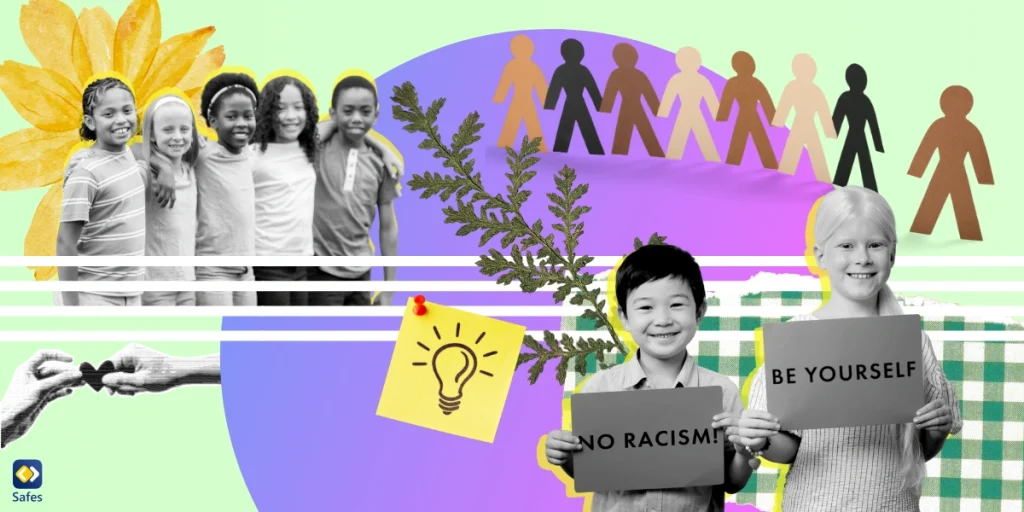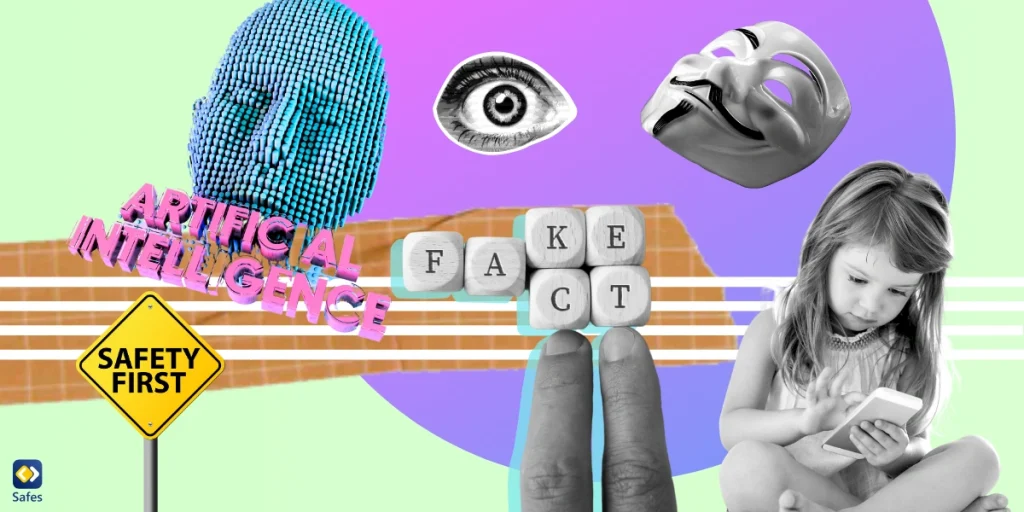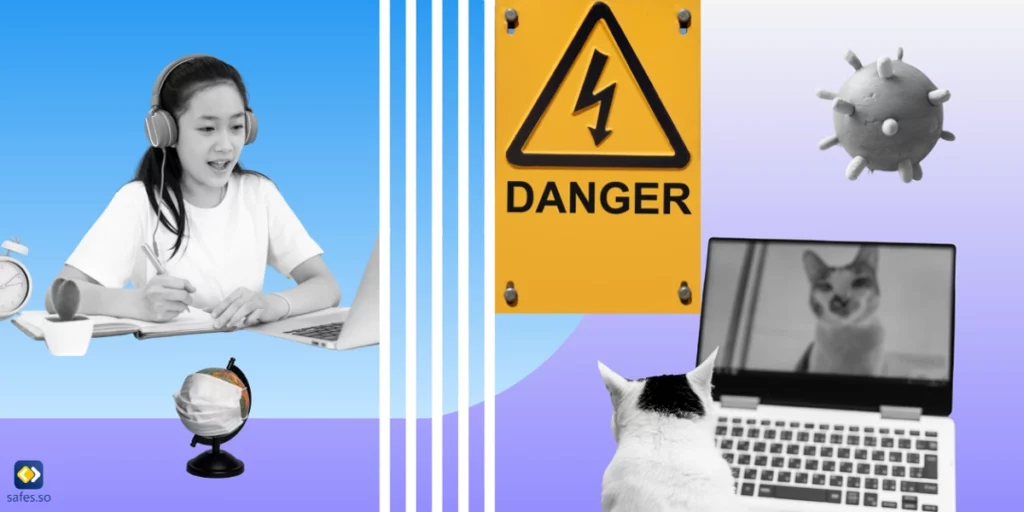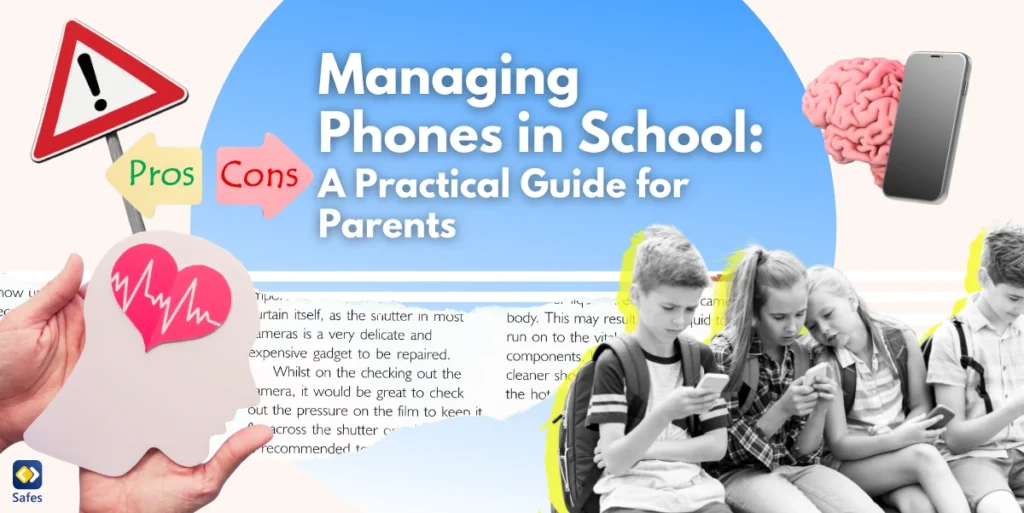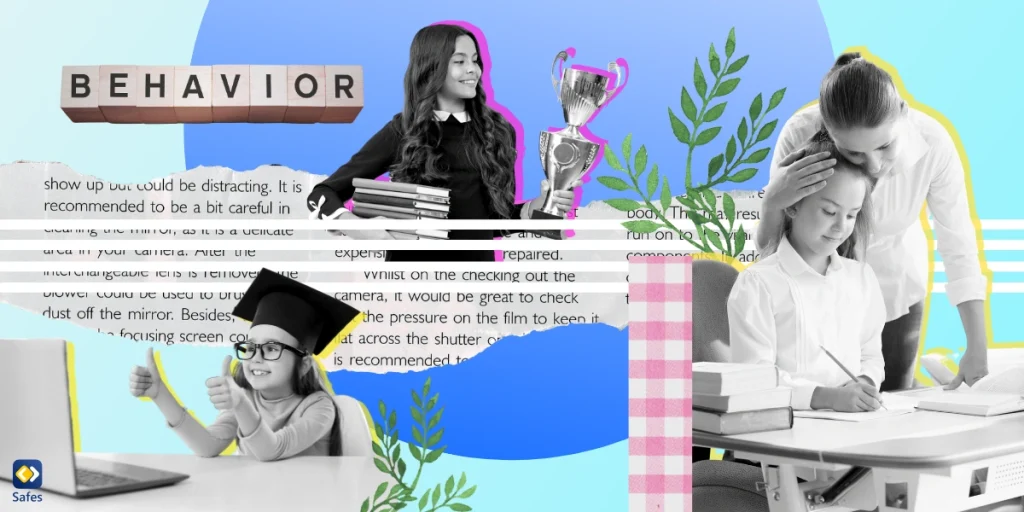Racism is a complex and pervasive issue that has plagued societies for centuries. It is a topic that often throws us in a dilemma about approaching it, especially with our children. As a parent, you are responsible for ensuring your child understands and stands against all types of racism. The first step for this goal is to understand the different kinds of racism that exist in society. This guide will help you become familiar with what exactly racism is, various forms of racism, and how to educate your child about it.
Download and Start Your Free Trial of the Safes Parental Control App
What Is Racism?
The American Psychological Association defines racism as “structural, institutional, interpersonal, and internalized.” While often associated with power structures favoring one race over another, racism extends beyond this simple definition. Racism is a multi-faceted ideology that asserts the superiority of one race over another. It manifests in various forms, from internalized prejudices to institutional policies, affecting all areas of life. To understand the cumulative and compounding effects of racism, we must first learn about the different types of racism.
The 4 Types of Racism
Rooted in a nation’s history, culture, and ideology, racism is not monolithic; it exists on multiple levels, each with unique nuances and implications. Here are the 4 types of racism that you should be aware of:
-
Personal or Internalized Racism
Personal or internalized or individual racism refers to individual prejudices, biases, and ideas based on racial stereotypes. Examples of individual racism often manifest as microaggressions, subtle comments, or actions that convey hostility towards a particular racial or ethnic group, such as African Americans or the indigenous people of a certain area.
.
-
Interpersonal Racism
Interpersonal racism includes the expression of racism between individuals. Interpersonal racism examples are bullying, verbal harassment, and negative racial assumptions about others. These actions are different from the examples of individual racism because they occur when individuals interact and can be more severe.
-
Institutional Racism
Institutional racism describes the discriminatory policies and practices within organizations that disproportionately affect certain racial or ethnic groups. This form of racism is deeply rooted in many societies and manifests in healthcare, education, and employment.
-
Structural Racism
Structural racism encompasses societal norms, rules, and policies perpetuating racial disparities. Unlike interpersonal racism examples, structural racism is often invisible and systemic, affecting large groups of people across various societal institutions.
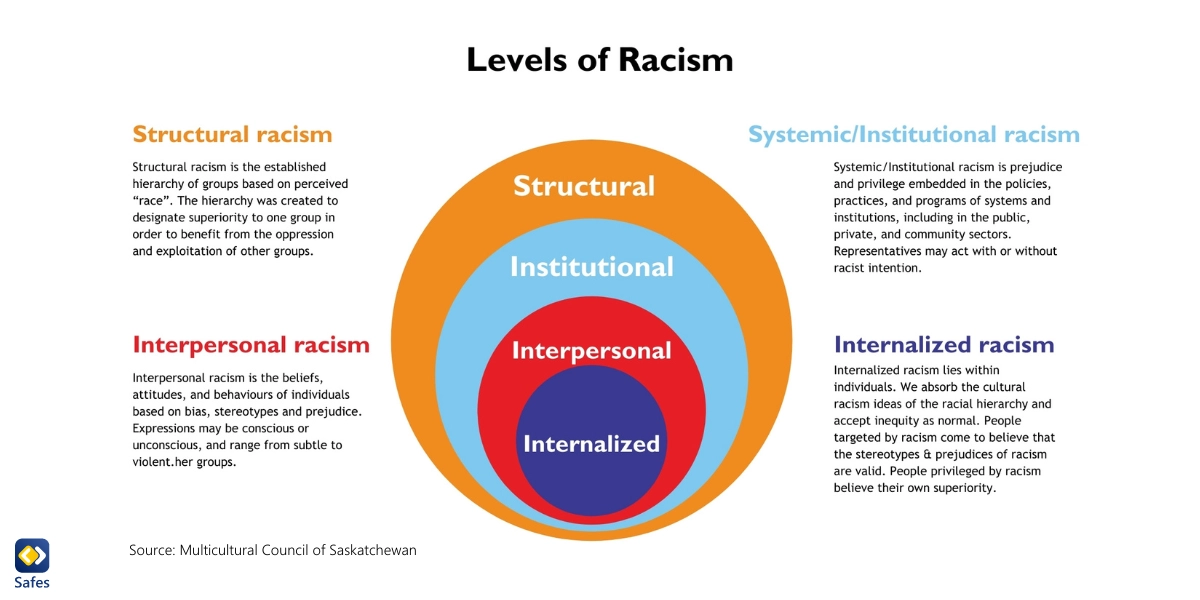
Implicit Bias vs. Explicit Bias
Racism encompasses both explicit and implicit forms of bias.
-
Implicit Bias
Implicit bias is individuals’ unconscious prejudices toward certain racial or ethnic groups. While not consciously chosen, these biases can significantly influence a person’s thoughts, actions, and judgments.
-
Explicit Bias
Explicit bias, on the other hand, refers to the conscious and intentional acts of discrimination based on race or ethnicity. It’s marked by using racial slurs, engaging in hate speech, or openly advocating for the superiority of certain racial or ethnic groups.
How Racism Manifests in Everyday Life
Racism can be subtle, often manifesting in everyday life in ways we might not readily recognize. Also, unfortunately, racism sometimes becomes so familiar and natural in some societies that people may not mark it as racism. Here are some common examples of how racism can appear:
Stereotyping: Stereotyping means associating certain groups with particular traits or characteristics, often based on racial or ethnic stereotypes.
Confirmation Bias: People with confirmation bias tend to interpret information to confirm their existing preferences, leading to selective perception and interpretation.
Nonverbal Behavior: Racism can also manifest in body language, facial expressions, and tone of voice, subtly conveying bias or discomfort during interactions.
Educating Children about Racism
We should teach our children about race and racism from a young age to build a more inclusive and empathetic generation. But we should approach the topic in an age-appropriate manner.
For Children Under 5 Years
At this age, children start noticing differences among people. You can leverage this curiosity to instill the values of diversity and acceptance. Here’s how:
Acknowledge and celebrate differences: If your child asks about someone’s skin color, use it to acknowledge the diversity and emphasize commonalities among humans.
Encourage open discussions: Ensure your child feels comfortable asking questions about differences and reassure them that it’s not taboo.
Use the concept of fairness: Children can quickly grasp the idea of fairness. Use this to explain racism as an unfair and unacceptable practice that has inequitable outcomes for people of color and advantages for white people.
For Children Aged 6-11 Years
Children at this age are more expressive and curious. They can understand complex concepts and are more exposed to diverse information sources, like school and the internet. Here’s how to guide them:
Encourage questions: Ask what they hear at school or on the internet about race and racism. This will help you understand their perception and correct any misconceptions.
Discuss media portrayal: Use examples from the media to discuss stereotypes and racial bias.
Foster open conversations: Encourage honest discussions about racism, diversity, and inclusivity. This approach will build trust and make them feel comfortable discussing topics such as discrimination between white people and disadvantaged people of color.
For Teenagers
Teenagers can understand abstract concepts and may already have strong opinions. Here’s how to engage them:
Understand their perspective: Find out what they know about racism and discrimination based on what they’ve heard or experienced.
Foster critical thinking: Use current events as conversation starters about how racism occurs. Ask their opinions and introduce different perspectives to broaden their understanding.
Encourage active participation: Many teenagers are active on social media. Encourage them to use these platforms to raise awareness about racial issues.
- Related Article: 4 Practical Solutions to Protect Children from Online Racism!

Dealing with Racism in Schools
Teaching children about race and types of racism in society doesn’t stop at home. Teachers and schools also play a significant role in eliminating systemic racism. So, you must collaborate with your child’s school to guarantee it. Meanwhile, you should teach your child what to do if they experienced or witnessed racism.
Communicate with the teacher: If your child has experienced or witnessed racial discrimination, discuss the incident with your child’s teacher. If the response is unsatisfactory, consider escalating the matter to the school principal.
Document the incidents: Record all the happenings, detailing what happened, when, and who was involved. You can benefit from this method if you decide to report the racism incident.
Advocate for diversity in educational materials: Ensure that the school’s curriculum includes diverse representation, which can help promote understanding and acceptance among students.
The Role of Parents as Role Models
You play a crucial role in shaping your child’s understanding of race and different forms of racism. Here are some ways you can set a positive example:
Lead by example: Children learn from observing their parents. Make sure your actions and words reflect fairness, respect, and equality.
Educate yourself: Before educating your child, you need to educate yourself. So, read books, watch documentaries, listen to podcasts about racism, and avoid telling racist jokes!
Encourage diversity: Expose your child to diverse cultures and people to help them appreciate different racial groups and understand that everyone is unique and valuable, regardless of race or ethnicity.
Challenge racism: Whenever you encounter racial inequality, speak out against it. This approach will teach your child to stand against injustice.
Use technology to protect your child: Use parental control apps, like Safes, to monitor your child’s social media feeds and internet history. These apps can help you detect and remove any racist content they might encounter online. You can also use Safes’s Safe Search feature to weed out racist pages from your child’s search results.
Empower your parenting with a free trial of Safes! Sign up now to access advanced parental control features and ensure a safer digital environment for your child. Don’t miss out – start your trial today and experience peace of mind!
The Bottom Line: Let’s Stop Different Types of Racism in Society
We can confront and overcome racism with understanding and education. Each of us has a role in fighting racism, but as a parent, you have a unique position in this fight because you have the power to raise a generation that values fairness, respect, and equality.
Your Child’s Online Safety Starts Here
Every parent today needs a solution to manage screen time and keep their child safe online.
Without the right tools, digital risks and excessive screen time can impact children's well-being. Safes helps parents set healthy boundaries, monitor activity, and protect kids from online dangers—all with an easy-to-use app.
Take control of your child’s digital world. Learn more about Safes or download the app to start your free trial today!
